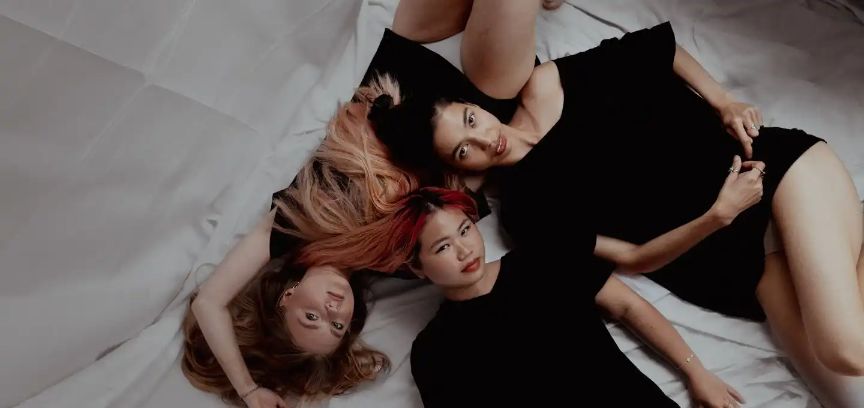Finding Your Best Colors: Fashion Tips Based on Skin Tone and Personal Style
3 min read
14 Jun 2024
The world of fashion offers endless possibilities for self-expression, and one crucial element in creating a stylish and flattering wardrobe is understanding the colors that suit you best. Your skin tone and personal style play a significant role in determining which colors enhance your natural beauty and make you feel confident and comfortable. In this 800-word guide, we'll explore how to find your best colors based on your skin tone and personal style.
Determining Your Skin Tone
Before diving into color choices, it's essential to determine your skin tone. Skin tones generally fall into one of three categories: warm, cool, or neutral. Here's how to identify yours:

1. Warm Skin Tone:
Warm-toned individuals typically have:
Skin that has a golden or olive undertone.
Veins that appear more greenish.
Hair that ranges from red or auburn to dark brown or black.
Eyes that are hazel, green, or brown.
2. Cool Skin Tone:
Cool-toned individuals often have:
Skin with pink, red, or bluish undertones.
Veins that appear bluish.
Hair that ranges from platinum blonde or ash brown to dark brown or black.
Eyes that are blue, gray, or green.
3. Neutral Skin Tone:
Neutral-toned individuals have a balance of warm and cool undertones in their skin. Their veins may appear bluish-green, and their hair and eye colors vary widely.
Once you've determined your skin tone, you can start selecting colors that complement it and enhance your overall appearance.
Choosing Colors for Your Skin Tone
For Warm Skin Tones:
Warm-toned individuals tend to look best in earthy, warm, and rich colors that harmonize with their undertones. Consider incorporating the following shades into your wardrobe:
Warm Reds: Rust, tomato red, and brick red can add vibrancy to your look.
Golden Yellows: Mustard, sunflower yellow, and goldenrod can bring warmth to your complexion.
Earthy Greens: Olive, moss green, and forest green can enhance your natural glow.
Warm Neutrals: Camel, caramel, and terracotta can be flattering choices for clothing and accessories.
Warm Blues: Teal and turquoise can complement your skin tone beautifully.
For Cool Skin Tones:
Cool-toned individuals often shine in colors that have blue undertones and create contrast with their skin. Consider adding the following hues to your wardrobe:
Cool Pinks: Rose, fuchsia, and baby pink can highlight your cool undertones.
Cool Blues: Navy, cobalt, and periwinkle can enhance your complexion.
Cool Purples: Lavender, plum, and royal purple can create a stunning contrast.
Cool Greens: Mint, emerald, and seafoam green can bring out your natural radiance.
Cool Neutrals: Charcoal, slate gray, and icy gray can be chic choices for clothing and accessories.
For Neutral Skin Tones:
Neutral-toned individuals have the flexibility to experiment with a wide range of colors that work harmoniously with their balanced undertones. Some versatile options include:
Jewel Tones: Deep, saturated colors like emerald green, sapphire blue, and ruby red can enhance your overall look.
Muted Neutrals: Mauve, taupe, and soft gray can create a sophisticated and timeless appearance.
Pastels: Soft pastel shades, such as blush pink, lavender, and mint green, can complement your skin tone beautifully.
Warm and Cool Combinations: You can mix warm and cool colors in your outfits to create a balanced and eye-catching effect.
Personal Style and Color Harmony
While understanding your skin tone is essential in selecting flattering colors, your personal style also plays a significant role. Your style preferences may lead you to gravitate toward certain colors that resonate with your personality and fashion choices.
1. Classic Style:
If you have a classic style, you may prefer timeless colors like black, white, navy, and beige. These neutral shades can form the foundation of your wardrobe, allowing you to mix and match effortlessly while maintaining a polished look.
2. Bohemian Style:
Bohemian fashion is often associated with earthy, natural colors like terracotta, mustard, and olive green. Embrace these warm, rustic tones to create a free-spirited and eclectic style.
3. Preppy Style:
Preppy fashion is characterized by clean lines and a love for classic patterns like stripes and plaids. You may find that a palette of navy, white, and pastel colors aligns perfectly with your preppy aesthetic.
4. Edgy Style:
If you have an edgy style, you might be drawn to darker and bolder colors like black, charcoal, deep burgundy, and forest green. These shades can add an element of drama and attitude to your outfits.
5. Minimalist Style:
Minimalist fashion embraces simplicity and often features a monochromatic color scheme. Opt for muted and understated colors like gray, beige, and soft pink to achieve a minimalist look.
6. Eclectic Style:
For those with an eclectic style, the sky's the limit when it comes to color choices. Embrace a mix of vibrant, unconventional shades that reflect your unique and eclectic taste.
Experiment and Trust Your Instincts
While understanding your skin tone and personal style provides helpful guidance, fashion is ultimately about self-expression and experimentation. Don't be afraid to step outside your comfort zone and try new colors that intrigue you. Trust your instincts and pay attention to how certain colors make you feel – confidence and comfort are the ultimate indicators of your best colors.
Conclusion: Expressing Yourself Through Color.
Selecting the best colors for your skin tone and personal style is a powerful tool in crafting a wardrobe that not only makes you look good but also makes you feel confident and authentic. By understanding your undertones, exploring color options, and aligning your choices with your fashion preferences, you can create a wardrobe that truly expresses your unique style and personality. Remember that fashion is a creative journey, and your style should ultimately reflect who you are and how you want to be seen by the world.
More Articles


